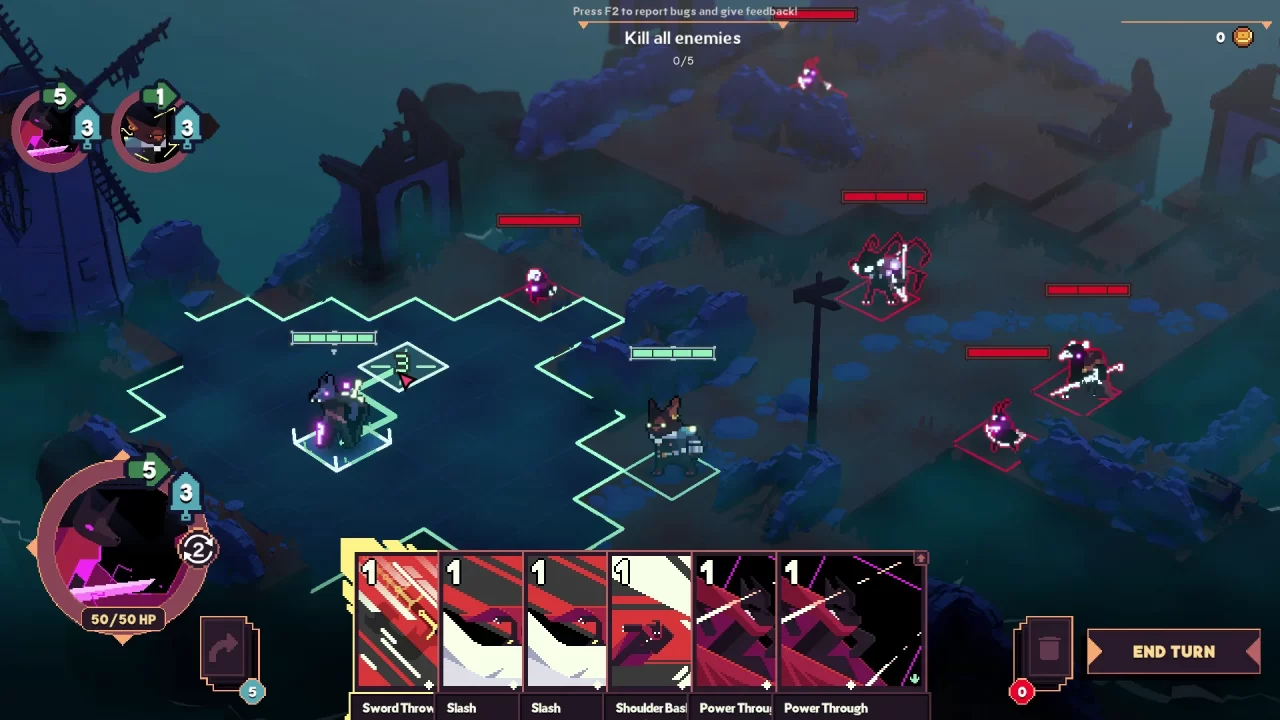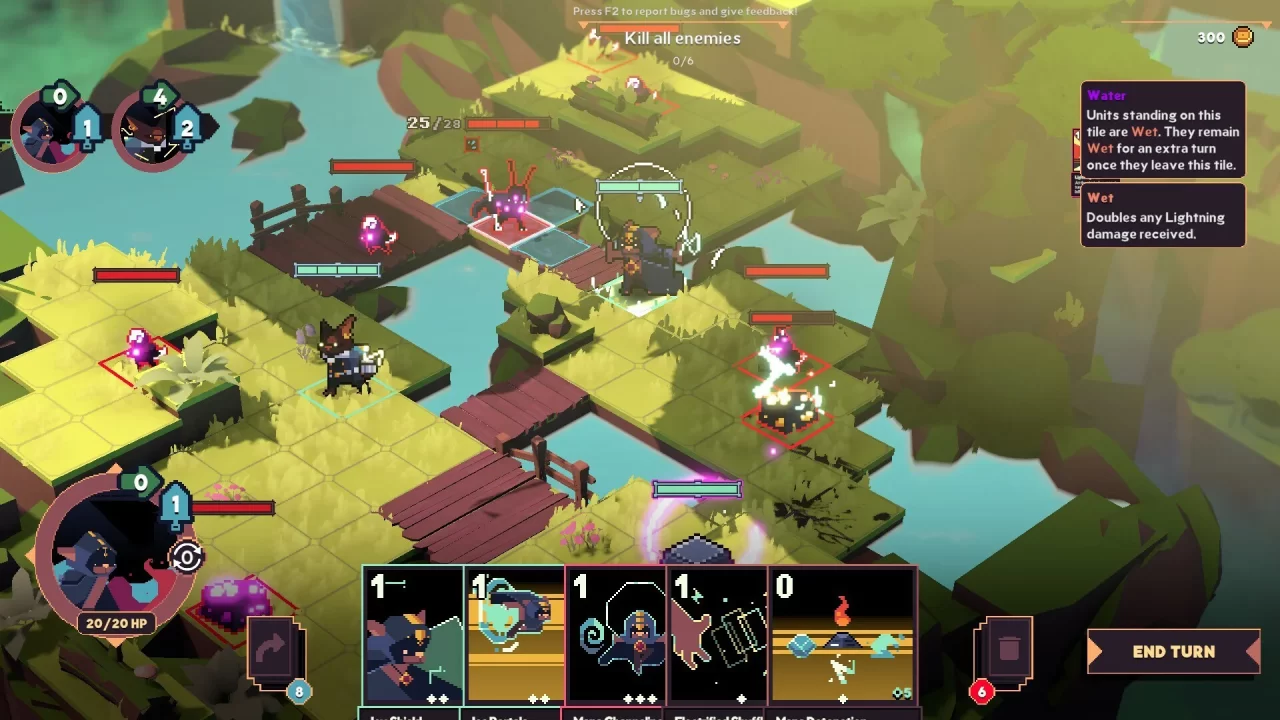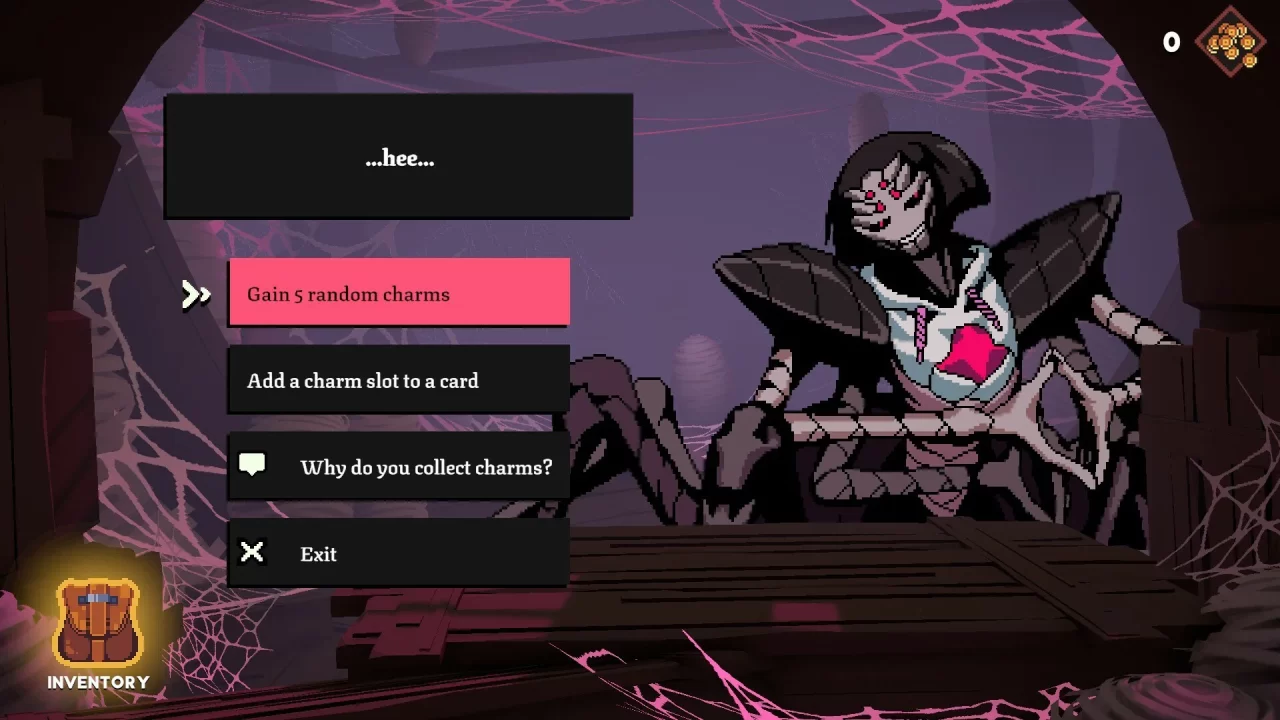From screenshots and gameplay clips alone, Shuffle Ways seems to be like an especially wise mixture of Slay the Spire, Into the Breach, and Closing Fantasy Ways. The infinite replayability of roguelite deckbuilding meshed with the added depth of turn-based fight on an isometric grid appeared like the best 200-hour time sink anybody might ask for. As an enormous fan of each genres, Shuffle Ways was too engaging a pitch for me to overlook.
Sadly, Shuffle Ways by no means manages to turn out to be a coherent sum of its elements. The story is little greater than a car for a single gameplay mechanic. The fight, whereas functionally superb, focuses extra on paying homage to its inspirations than making these borrowed mechanics gel collectively in a manner that is smart. To say that I used to be upset could be an understatement.
Maybe probably the most egregious flaw of Shuffle Ways is its atrocious gameplay readability previous the primary degree. The digital camera is angled such that enemy sprites block tiles immediately behind them. Mixed with the sheer quantity of enemy items doubtlessly on the map at a given time, you spend as a lot time making an attempt to click on on the proper tile as you do planning out which playing cards to play. Some bosses occupy a number of tiles directly, making exact mess around their outsized sprites unattainable. The well-crafted pixel art work is squandered on these overcrowded battlefields, leaving it troublesome to even find your character.
Compounding the problem is the shortage of a purposeful enemy intent system. Enemy motion and assault overlays blur collectively right into a complicated mess, made even more durable to parse on the isometric grid the place sprites block tiles and perspective hides essential info. Solely a handful of assaults are clearly telegraphed in shiny crimson, however these uncommon moments of readability are extra an exception than the rule. What must be cautious tactical planning devolves into preventing not solely the enemies but in addition the interface itself whereas making an attempt to get a grip on what’s taking place.
What in regards to the gameplay from the participant facet, although? Certainly, if the playing cards really feel enjoyable to play, they will cowl for among the weaknesses in encounter design? Sadly, I can’t give a optimistic reply right here, both. Shuffle Ways copies mechanics verbatim from its inspirations with out almost as a lot consideration for a way they match into the loop as a complete.
Let me take pleasure in some comparability with Slay the Spire‘s recreation design: drawing 5 playing cards and discarding your hand on the finish of your flip is a intelligent manner of guaranteeing gamers all the time have choices whereas forcing them to adapt. You may’t sit on playing cards for the “excellent play,” and as an alternative should do the very best with what you’re given. Even with this chaotic participant company, there are two constant rocks to anchor methods round: enemy intent is all the time clear, and assaults are all the time in vary. These easy ensures not solely curb the frustrations of the occasional poor draw order but in addition present a secure basis for long-term technique.
Shuffle Ways misses each anchors, leaving its strategic gameplay adrift. You’re subjected to all of the turbulence of solely having a fraction of your strikes out there at any given flip, with not one of the baseline ensures to help outlining a recreation plan. It’s little shock that the least irritating path to victory I discovered was abusing playing cards that return to your hand at first of each flip, not as a result of it was intelligent or notably compelling, however as a result of it affords the one semblance of consistency in a recreation that guarantees technique but not often delivers it.
The sidekick system, in the meantime, solely provides to this sense of imbalance. The recruitable sidekicks’ power ranges swing so wildly that some operate as point-and-click powerhouses whereas others are barely value choosing up. You could possibly argue that this variance is a part of the roguelite or deckbuilding DNA, however this gulf in baseline usefulness feels much less like intentional design and extra like unfinished tuning. The shortage of sidekick upgrades additional affirms this sense; choosing a weak sidekick early can kill the tempo of the sport, turning what must be a significant addition to your arsenal right into a predictably tedious babysitting sidequest.
Even when they’re efficient, sidekicks don’t essentially enhance the sport’s circulation. With a dozen or extra enemies crowding the grid directly, their presence usually looks like a stopgap answer to redirect aggro away from the participant. As you possibly can think about, this solely makes the already chaotic, overcrowded board state even more durable to learn.
The allure upgrading system stays caught in an identical rut. Although the varied results supplied by the charms are extra attention-grabbing than generic stat boosts, a myriad of restrictions that make little sense in follow chain them down. Each debuff-inducing allure I discovered was locked to single-target functions solely, and since charms apply their results onto the tile that you choose, any card that has you shifting to the tile you chose has you debuffing your individual unit. What must be a versatile, build-defining system as an alternative seems like an oversight: a punishment for interacting with the sport as supposed, as an alternative of the freeform experimentation charms are ostensibly designed to encourage.
Even charms with different results that sound helpful can turn out to be undermined by their implementation. With no restrictions on allure placement, it’s straightforward to connect one which interacts with recreation mechanics that don’t have anything to do with the cardboard itself (i.e., movement-enhancing results onto a card that has you standing in place to assault), leading to a whole waste of an improve. Whereas I don’t count on guardrails on most mechanics in a roguelite, this degree of execution as soon as once more comes throughout much less like intentional design and extra like under-tested techniques left for the participant to type out.
Nonetheless, I do need to commend the sheer quantity of content material out there within the recreation. With a number of heroes, every beginning with their very own deck, and tons of of further playing cards to unlock, Shuffle Ways actually doesn’t lack the breadth of a full-priced launch. If the dopamine hit of steadily increasing an armory is your form of reward loop, Shuffle Ways has you properly coated.
But for all that content material, the muse Shuffle Ways finally rests on is shaky. The isometric grid muddies the waters as an alternative of offering significant depth, the companion and allure techniques really feel a number of iterations wanting being completed, and the core deck mechanics lack the consistency and design work that make its inspirations so enduring. Shuffle Ways is brimming with issues to unlock however starved for significant methods to get pleasure from them, leaving it much less a cohesive “biggest hits album” of roguelite components and extra of a confused compilation of fine concepts performed out of tune.






